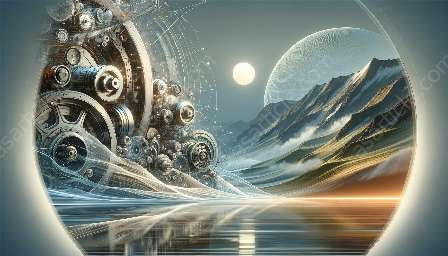Robotic vision and control technology is a critical component of modern robotics, shaping the way robots interact with their environment and enabling them to perform complex tasks with precision and efficiency. This topic cluster will delve into the fascinating world of robotic vision and control, exploring the intricate mechanisms that drive robotic systems and their impact on the dynamics and controls of these advanced machines.
The Fundamentals of Robotic Vision
Robotic vision encompasses the ability of robots to perceive and interpret their surroundings through sensors, cameras, and other imaging devices. This advanced technology enables robots to gather visual data, analyze it, and make informed decisions based on the information they receive.
One of the key challenges in robotic vision is the development of computer vision algorithms that allow robots to understand and interpret visual data in real-time, much like the human visual system. These algorithms enable robots to identify and track objects, navigate in complex environments, and recognize patterns and gestures, making them indispensable in various industrial, medical, and consumer applications.
Mastering Robotic Control Systems
Robotic control is the art of directing and regulating the movement, behavior, and overall performance of robots. It involves the design and implementation of control systems that govern the actions of robots, ensuring they operate with precision and accuracy.
Advanced control systems allow robots to execute a wide range of tasks, from simple movements to complex manipulations. These systems leverage technologies such as machine learning, artificial intelligence, and feedback control to enable robots to adapt to changing environments, avoid obstacles, and interact safely with humans and other machines.
Integration with Dynamics and Controls
Robotic vision and control are intricately linked with the dynamics and controls of robotic systems. Dynamics involves the study of the motion and forces acting on robots, while controls encompass the methods and algorithms used to influence and regulate their behavior.
By integrating robotic vision and control technologies with dynamics and controls, engineers can develop robots that operate seamlessly in dynamic environments, negotiate challenging terrains, and interact with precision and agility. This convergence of disciplines is driving the advancement of robotics, paving the way for innovative applications in fields such as autonomous vehicles, manufacturing automation, and assistive robotics.
Challenges and Future Developments
Despite the remarkable progress in robotic vision and control, numerous challenges persist in the field. These challenges include improving the robustness and reliability of vision systems, enhancing the adaptability and efficiency of control algorithms, and addressing the ethical and societal implications of widespread robotic deployment.
Looking ahead, the future of robotic vision and control promises groundbreaking advances, including the integration of augmented reality for enhanced vision, the development of intuitive human-robot interfaces for seamless control, and the emergence of collaborative robots that can work alongside humans harmoniously.
Conclusion
Robotic vision and control represent the cutting edge of robotics technology, shaping the evolution of robotic systems and their dynamics and controls. As research and development continue to push the boundaries of what is possible, the potential applications of robotic vision and control are poised to transform industries, improve quality of life, and redefine the capabilities of robots in a rapidly evolving world.

